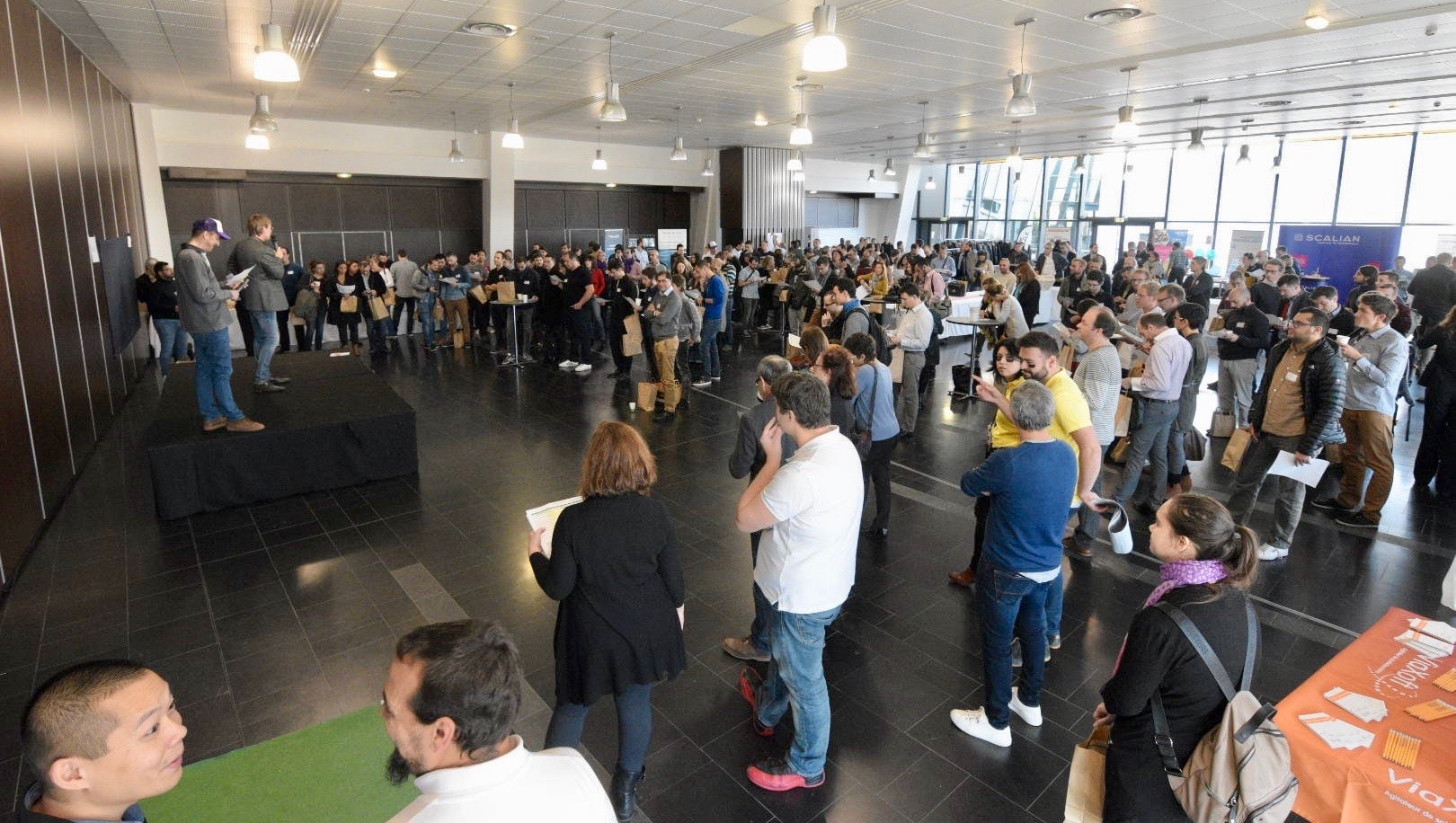
En tant qu’Agiliste, la fin d’année est rythmée par les Agile Tours. J’ai eu l’honneur de participer à nouveau à l’Agile Tour Aix-Marseille, le 7 Décembre 2017, qui m’avait déjà laissé un très bon souvenir en 2016 : j’y avais présenté le Ball Flow Game revisité et les Kanban Values.
Cette fois-ci, j’ai eu la chance de pouvoir partager 2 de mes sujets du moment :
- l’Agile Rocket, une autre manière de parler d’agilité sous forme métaphorique. Retrouvez les slides de ma session « Agile Rocket : Module Coopérer ».
- L’Énneagramme, un modèle de typologie de personnalité que j’affectionne tout particulièrement, au travers de la session « Mieux communiquer en découvrant ses filtres d’attention »
Je décrirais dans cet article mon atelier sur les filtres d’attention qui, je l’espère, a pu susciter la curiosité des participants ! 😉
Le pitch
Un élément maintenant récurrent dans les Agile Tours : le pitch des orateurs. L’idée est de présenter en 30 secondes sa session afin d’attiser la curiosité des participants !
Cet exercice est toujours un peu stressant pour moi, mais voici celui que j’ai proposé :
Dans ma session, je vous propose de parler filtres d’attention. Pourquoi donc ? Car ce à quoi nous faisons attention est le reflet de notre manière de penser, de réfléchir, de nous comporter et donc de communiquer. En effet, une des illusions de la communication est de croire que ce qui est important pour nous l’est forcément pour l’autre !
Vous découvrirez dans le même temps un modèle de typologie de personnalité qui, je l’espère, vous aidera à mieux vous connaître, mieux comprendre les autres et rendre vos interactions plus efficaces.
L’atelier
Ayant 2h pour ma session, la structure d’atelier fut la suivante :
- (40′) Une partie pratique où les participants vont découvrir eux-mêmes le contenu
- (20′) Débriefing
- (60′) Présentation du modèle et Questions/Réponses
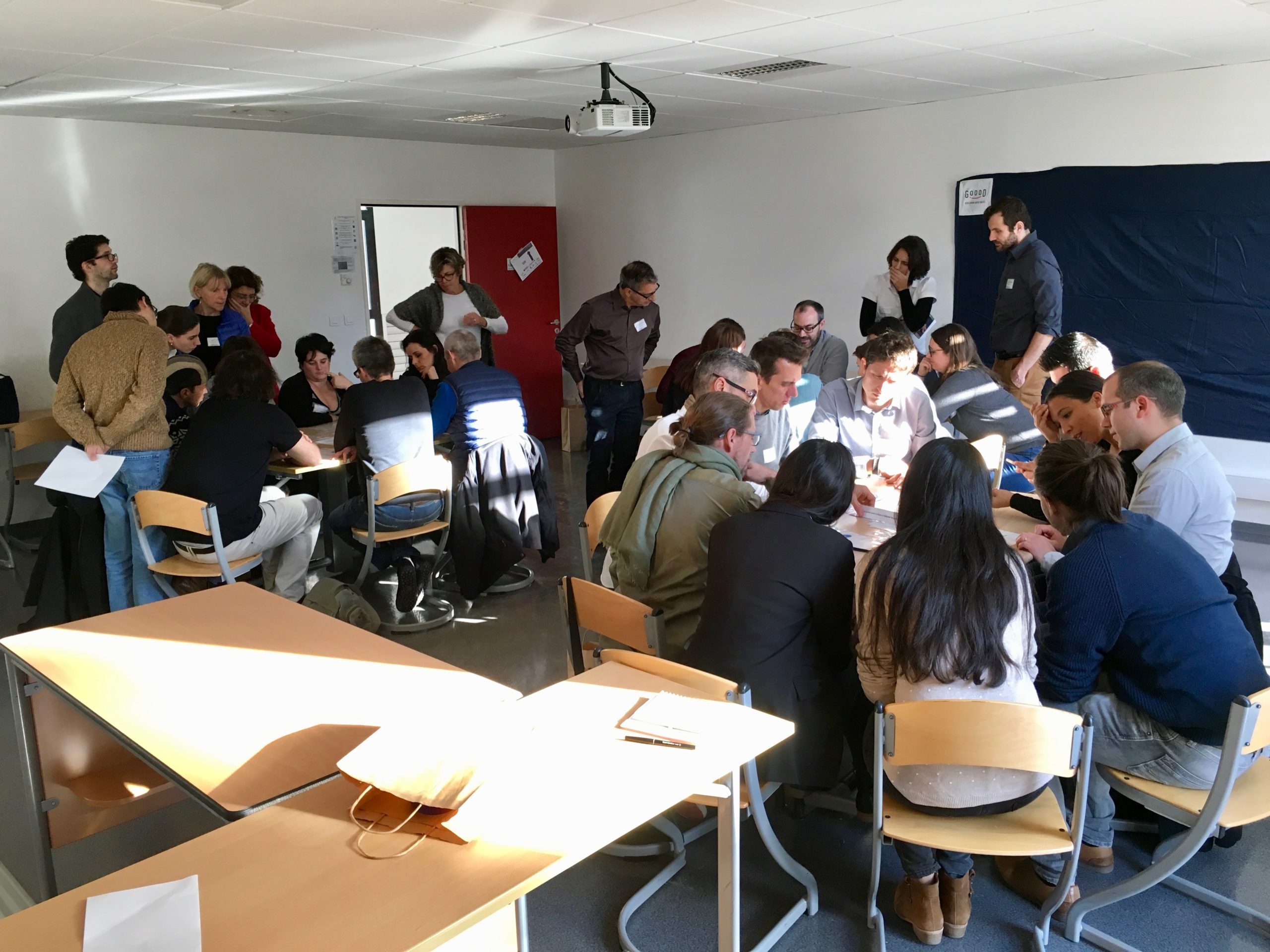
Dans cette première phase, les participants vont être divisés en 3 sous-groupes afin de découvrir 3 filtres d’attention à la fois.
Par exemple :
Les objectifs et opinions des autres, ce qui peut m’éviter l’inconfort.
Sous la forme d’un puzzle, ils vont devoir lui associer :
- Une motivation principale : ce qui pousse la personne à faire ce qu’elle fait
- Une valeur culte
- Une tendance principale (sous stress)
- Ce que la personne cherche à éviter à tout prix
- Un style de communication
- Des paroles ou pensées habituelles
Cela ressemble à peu près à cela :
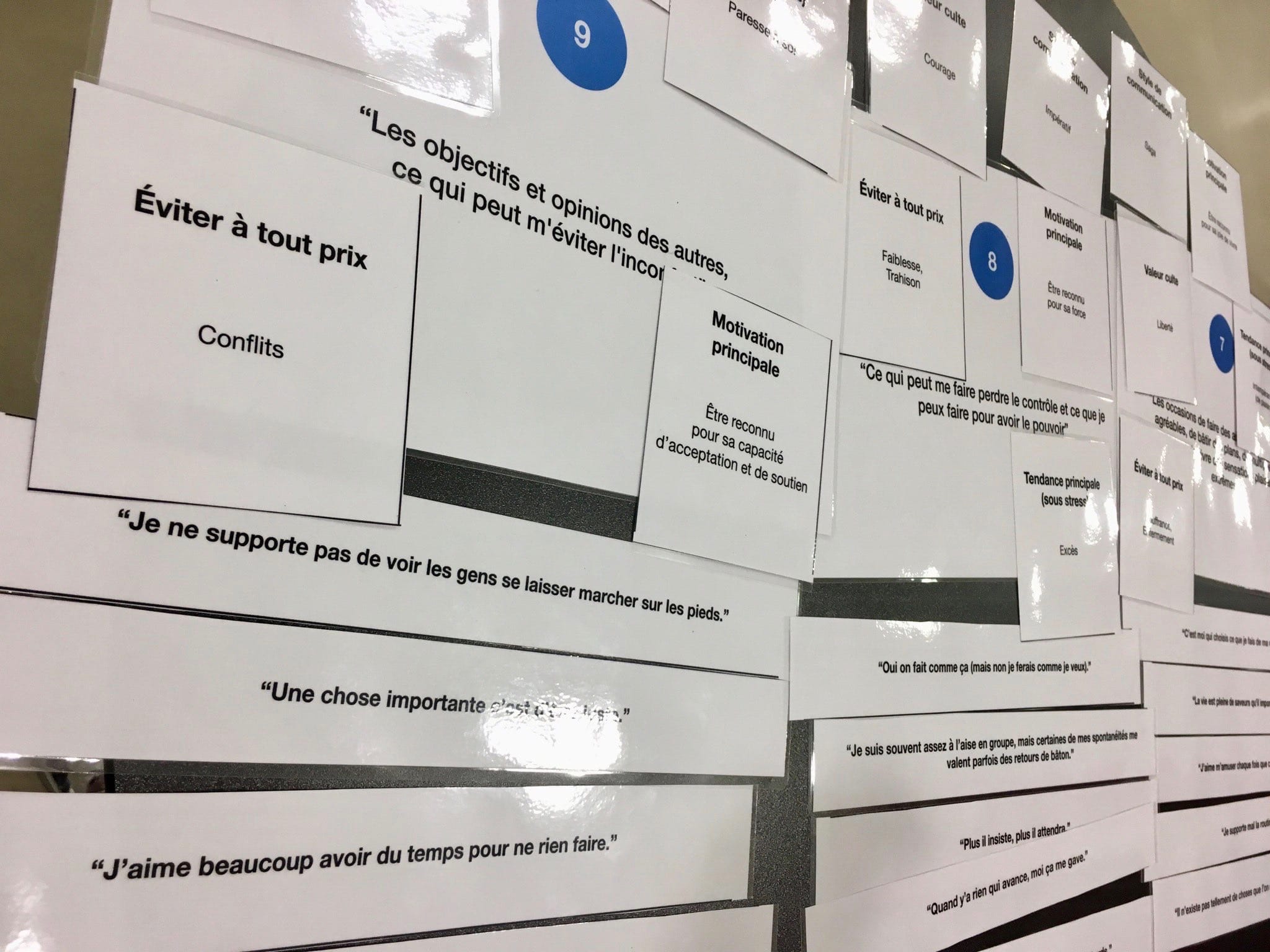
En ayant 9 à découvrir, chaque groupe va tourner sur les filtres d’attention des autres toutes les 15 minutes. Je leur demande alors de simplement vérifier la cohérence des associations déjà présentes et d’effectuer des modifications si nécessaires. Je ne donne pas particulièrement plus d’informations sur le contenu avant de lancer l’atelier, l’intérêt étant de susciter les échanges entre participants.
A la fin de la dernière timebox de 15′, j’invite les participants à lancer la phase de débriefing.
Débriefing
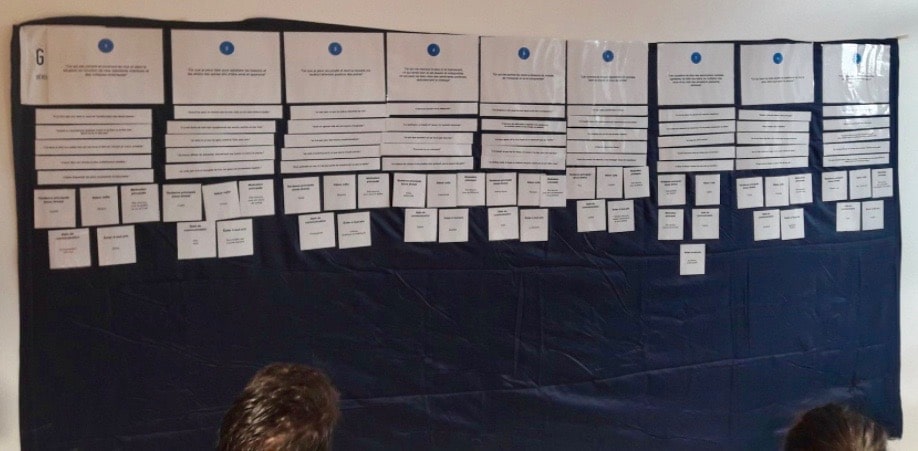
Chaque groupe vient afficher sur le Stick Wall ses résultats. Il est alors plus facile de débriefer ensemble en ayant tous les éléments sous les yeux ! 😉
Plutôt que d’apporter des réponses, je tente de raconter une histoire en utilisant le filtre d’attention. Cela permet aux participants de mieux comprendre le cheminement, de se corriger eux-mêmes – sachant qu’ils avaient le choix entre 3 options à chaque fois – et de générer des échanges.
Lorsque je suis passé sur les 9 filtres d’attention, je partage avec bienveillance la chute de l’atelier :
Vous avez pu remarquer que la description que j’ai faite de chaque personnalité était plutôt sous l’angle des défauts que des qualités. Il faut savoir que j’ai été également méchant avec chacune, ce qui fait que si vous avez l’impression que j’ai été plus dûr avec une qu’avec une autre, c’est qu’il y a peut-être anguille sous roche ! 😛
On peut alors voir quelques sourires se dessiner sur les visages et une certaine détente dans l’ambiance. 😆
Je partage avec les participants une des autres illusions de la communication selon moi :
Croire que parce qu’un outil a fonctionné avec une personne, qu’il fonctionnera forcément avec une autre.
Je leur demande alors si l’exercice était facile pour eux. Nous nous mettons d’accord sur le fait que cela a nécessité un certain effort pour bien comprendre une personnalité et c’est à ce moment là que je les invite à me dire comment mieux communiquer avec une personne dont le filtre d’attention est :
Les sources de danger apparentes et cachées dans le monde et chez les autres.
Les réponses que j’obtiens sont les suivantes :
- Il faut être clair, précis
- Il faut la rassurer, la sécuriser
- Il faut lui parler de choses concrètes, bien définies
- …
Rien qui ne vienne de moi, tout qui vient des participants ! Je me permets alors de leur faire la remarque afin qu’ils réalisent qu’ils ont toutes les réponses, il ne leur manque qu’à faire l’effort nécessaire ! 😉
J’enchaîne ensuite tranquillement sur une description du modèle.
L’intention et les messages de l’atelier
Mon intention première était bien évidemment de faire découvrir ce modèle passionnant qu’est l’Ennéagramme.
Maintenant, il était également important pour moi de faire passer certains messages au travers de l’atelier :
L’Ennéagramme est avant tout un outil destiné à la connaissance de soi et à la transformation personnelle.
Une chose peut-être difficile à accepter est que l’on ne peut pas changer les autres. Par contre, on peut changer la manière dont on interagit avec eux ce qui signifie que le changement commence par soi !
Se découvrir soi-même, c’est comprendre ce qui nous porte, ce qui nous dérange, nous met mal à l’aise mais également ce qui peut irriter les autres chez nous. N’y a t-il donc pas déjà suffisamment à faire de notre côté avant d’aller chez les autres ? 😛
L’Ennéagramme est un modèle de typologie de personnalités s’intéressant avant tout aux motivations des individus plutôt qu’à leurs comportements.
Les échanges entre participants montrent bien que les caractéristiques ne sont pas toujours associables de manière directe. En effet, tous ces éléments ne sont que des comportements et les argumentations qui émergent en viennent à remonter à l’intention de la personne, à sa motivation. Ainsi, on comprend alors qu’à un même comportement on peut associer différentes motivations.
Malgré la tentation, permettons aux autres de se découvrir eux-mêmes.
On peut voir qu’il n’est pas si facile de typer une personne. En effet, nous ne voyons que des comportements et ce n’est qu’avec le temps et une bonne connaissance du modèle que l’on peut déceler des patterns qui se répètent pouvant nous aider à remonter à la motivation.
Dire à une personne qu’elle est de tel ou tel type, c’est imposer une vision partielle de sa personnalité, avec d’ailleurs une grande probabilité qu’elle soit erronée. C’est également l’empêcher de s’auto-observer et de se libérer de ses automatismes limitants.
Permettre aux autres de se découvrir eux-mêmes, c’est également accepter qu’ils ne souhaitent pas le faire.
La découverte de son type peut parfois être douloureux pour certaines personnes et cela ne doit pas leur être imposé. C’est pourquoi dans le processus, j’invite les participants à se mettre à la place d’une personne possédant le filtre d’attention afin de se distancier pendant l’étude.
Lors du débriefing et surtout lors de la chute, c’est ma tentative pour donner des indications aux personnes sur les types à approfondir sans pour autant qu’ils aient à les communiquer ouvertement : c’est mon cadeau disons !
L’Ennéagramme est un incroyable outil de compassion.
Croire que ce qui est important pour nous l’est forcément pour l’autre, c’est se tromper 8 fois sur 9 selon l’Ennéagramme !
Découvrir que nous ne voyons pas tous le monde de la même manière, c’est comprendre que les intentions des autres ne sont pas forcément contre nous, mais peut-être pour eux ! Se donner l’opportunité de comprendre n’est bien évidemment pas de justifier certains comportements, mais cela permet de se distancier des événements et de limiter nos jugements vis à vis des autres.
L’Ennéagramme ne met pas des gens dans des boites car un type ne décrit pas entièrement un individu.
Au travers de l’atelier, la remarque émerge souvent sur le fait que les participants se reconnaissent à différents endroits. Il faut simplement garder à l’esprit que nous sommes tous capables de tout « faire » si l’on parle de comportements mais que nous avons des automatismes « sous stress » que nous activons plus facilement que d’autres.
En effet, un individu est un mélange complexe qui ne se réduit pas à ses automatismes. L’Ennéagramme, plutôt que de mettre des gens dans des boites, a vocation à conscientiser la boite dans laquelle on s’est enfermé (nos limitations) et de nous permettre d’exprimer tout notre potentiel !
Mieux communiquer avec les autres, c’est prendre le temps de les connaître.
Il n’y a selon moi pas d’outil miracle pour mieux communiquer avec les autres. L’effort qui a été fourni pendant l’atelier pour appréhender les différents filtres d’attention, et donc différents types de personnalité est pour moi un des meilleurs moyens pour interagir de manière plus efficace.
Conclusion
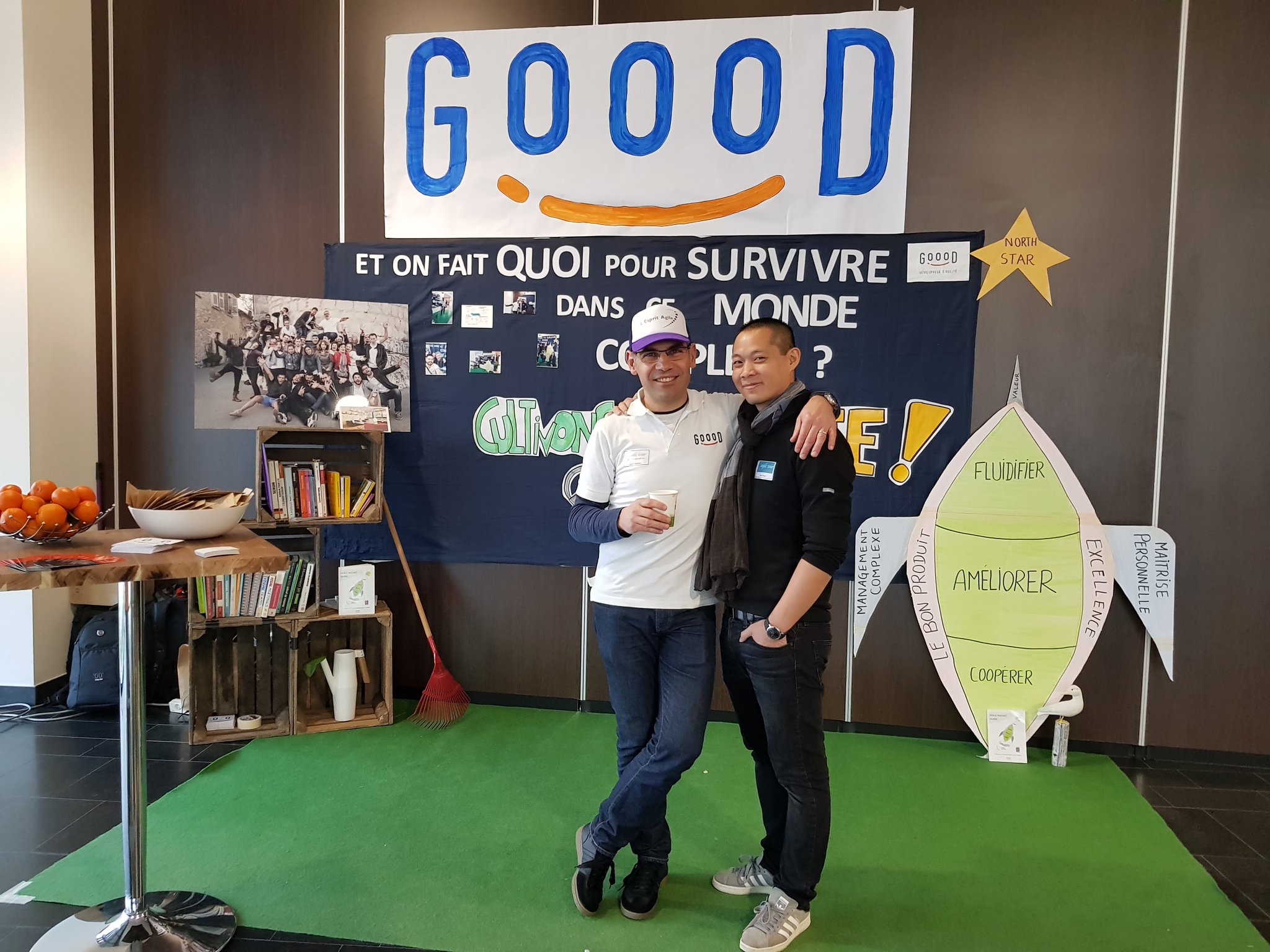
L’Agile Tour Aix Marseille est devenu selon moi un incontournable des conférences Agile de fin d’année tant par l’ambiance que la richesse des échanges entre orateurs et participants. Celui-ci fut très particulier pour moi car c’était le dernier en tant que Gooodien ! 😥
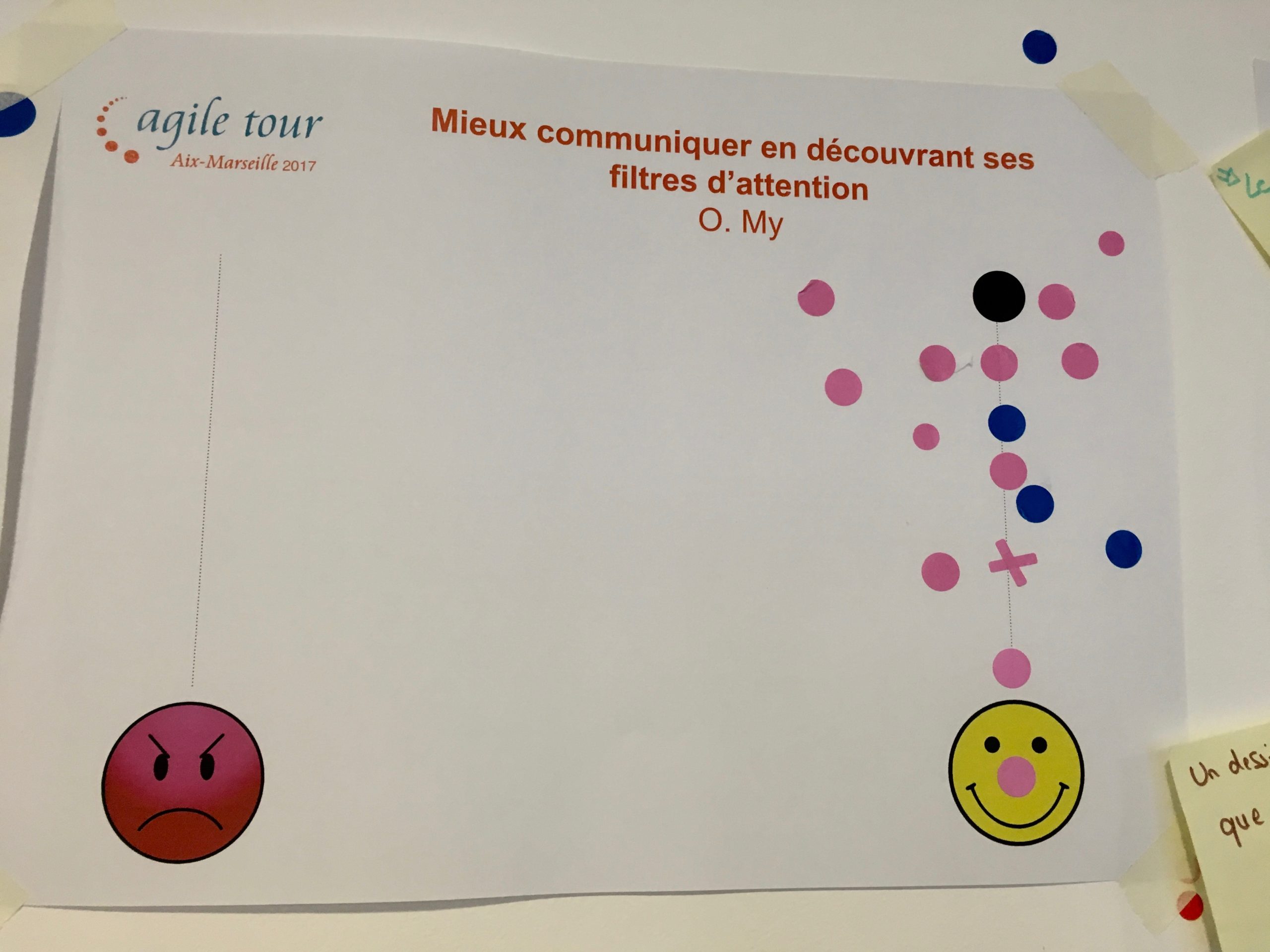
L’atelier en lui-même a reçu de très bons feedbacks et j’ai été moi-même surpris de l’engouement que le sujet a pu suscité auprès des participants ! Cela m’encourage à continuer sur cette lancée pour promouvoir et développer cet outil au sein de la communauté Agile.
Dans le cas où vous seriez intéressés pour organiser une session chez vous, n’hésitez pas à prendre contact avec moi. Plusieurs sessions ont déjà eu lieu dans différentes sociétés et communautés avec succès ! 😀

Un grand merci à l’organisation de l’ATAM pour son accueil, sa confiance et pour cette conférence de grande qualité ! 🙂
Je tenais à remercier tout particulièrement Patricia Chabreuil pour son aide et sa bienveillance dans la construction de cet atelier. Vous pouvez retrouver ses ouvrages sur le site de l’Institut Français de l’Ennéagramme.







2 réponses
Excellent, Olivier! Un grand bravo pour ce magnifique travail réalisé sur l’enneagramme. Chapeau!!!
Bravo pour le travail réalisé et pour l’article ;-). Vivement l’agile tour 2018 ^^.